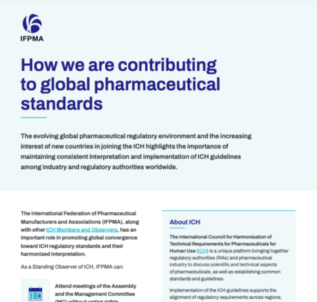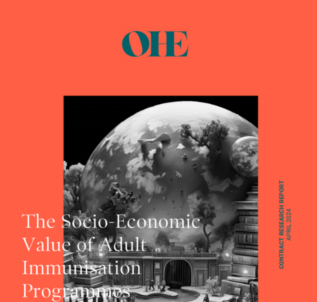New study reveals how the essential medicines list operates

Geneva, 20 April 2015
A new study entitled Understanding the Role and Use of Essential Medicines Lists conducted by the IMS Institute for Healthcare Informatics reveals how Essential Medicines Lists (EML) operate today.
The study was commissioned by the IFPMA and aims to give a brief on the role and use of the World Health Organization (WHO) EML. The research included a review of the evolution of the WHO list since its inception; a comparison of the WHO list with the EMLs implemented in a selection of nine countries; and discussion of factors that affect the implementation of EMLs in these countries. The countries selected were Brazil, China, India, Indonesia, Kenya, Malawi, Philippines, South Africa, and Tanzania.
The main findings of the report reveal that:
- WHO model EML has evolved and expanded since its inception in 1977, almost doubling in size
- The absolute and relative number of non-chronic diseases and selected chronic diseases included varies widely across country EMLs and in comparison to WHO Model List
- Implementation of country EMLs is limited by a range of factors preventing all patients being able to access essential medicines when needed
Mr Murray Aitken, Executive Director of the IMS Institute, and director of the study, said:
“With the present study, the reader can clearly see the wide variation between those drugs included in the WHO EML and those included in country EMLs. The increased focus on key non-communicable diseases is evident, though we note the rising prevalence of diabetes has prompted some country EMLs to adopt very different portfolios of oral anti-diabetic treatments than the WHO model list. We also find that newer targeted anti-cancer agents do not appear on the WHO Model EML, but are included in some of the country EMLs reviewed. While significant progress has been made in establishing the role of EMLs, impediments to the full implementation of country EMLs and universal availability of drugs on the lists remain significant.”
Commenting on the report Mr Eduardo Pisani, Director General at IFPMA said:
“This study is a valuable piece of research as it brings evidence on how this model is applied in the pre-selected countries of the report, which is an eye opener on evidence we did not have before. The study leaves us with more questions than answers; for instance how the WHO sees the future role of EML and how will its vision be translated into national policies within the universal health coverage context; what’s the mechanism for updating and identifying products on the list and so on. What is direly needed is that all relevant stakeholders engage in a meaningful dialogue for EML to operate as a powerful health tool and bring genuine impact on national medicines policies.”
About IFPMA
The International Federation of Pharmaceutical Manufacturers and Associations (IFPMA) represents over 90 innovative pharmaceutical companies and associations around the world. Our industry’s almost three million employees discover, develop, and deliver medicines and vaccines that advance global health. Based in Geneva, IFPMA has official relations with the United Nations and contributes industry expertise to help the global health community improve the lives of people everywhere. For more information, visit ifpma.org.
Learn more





